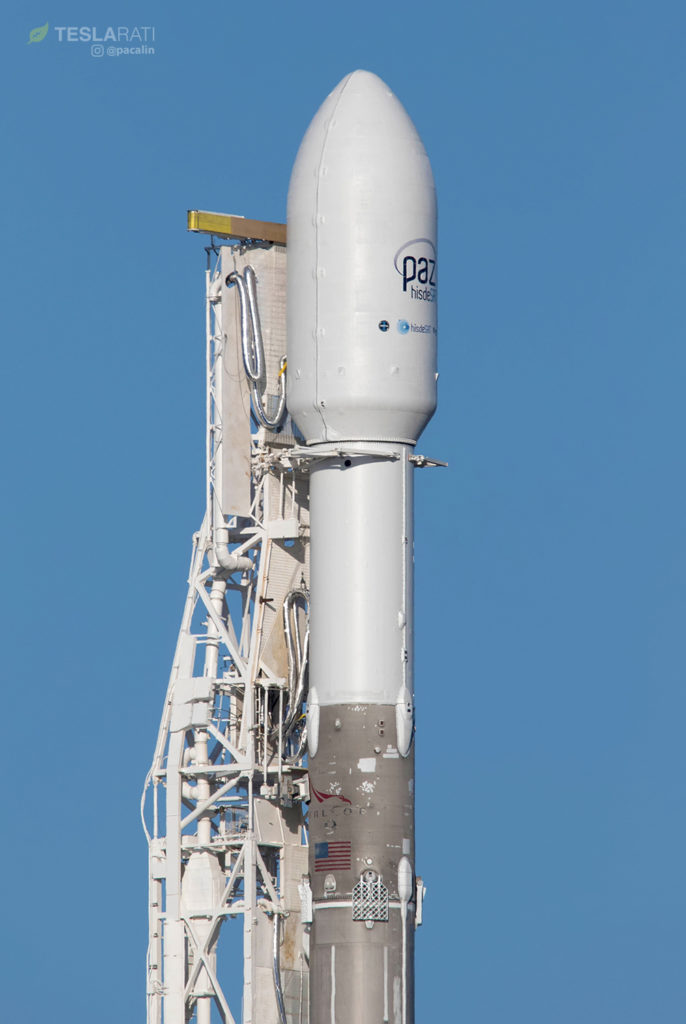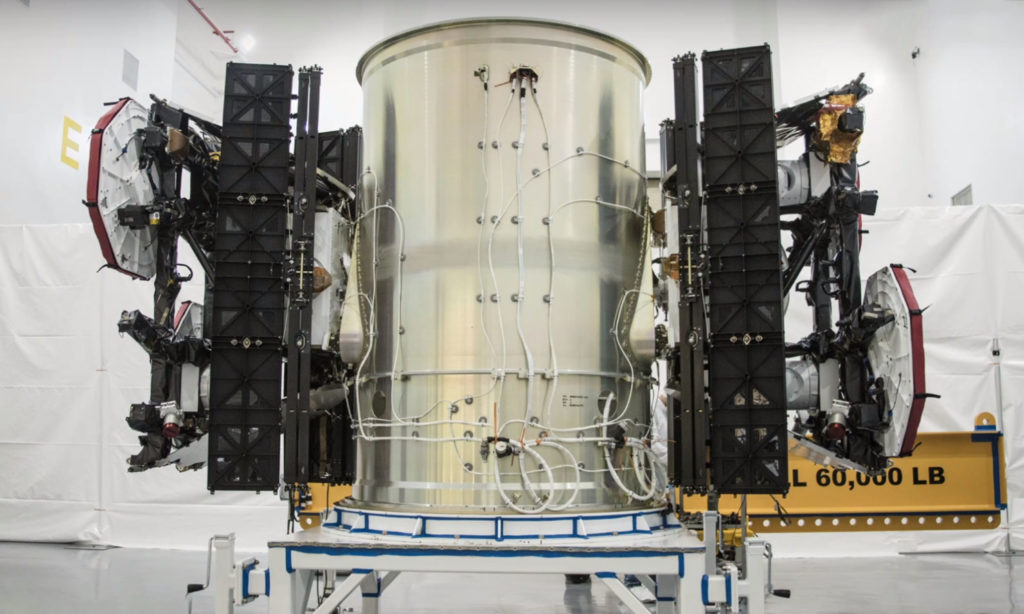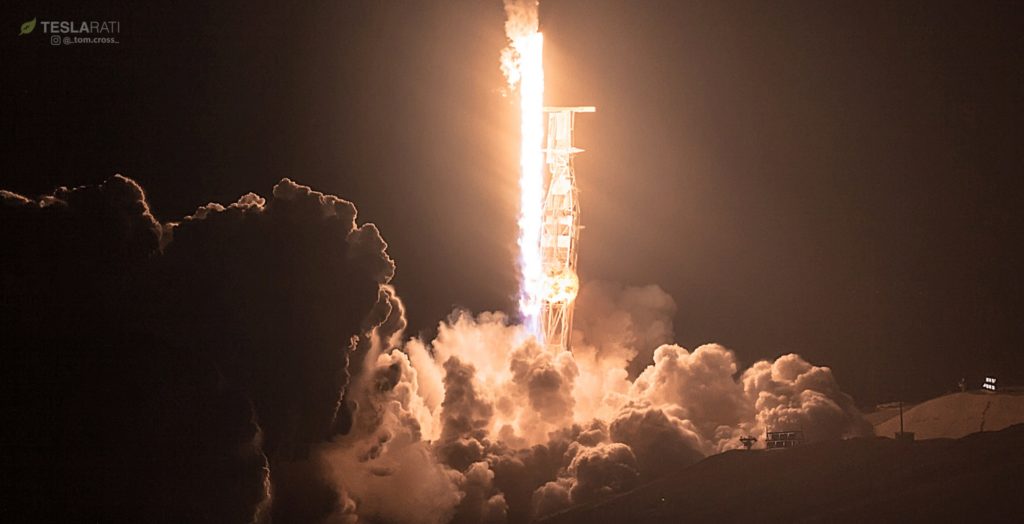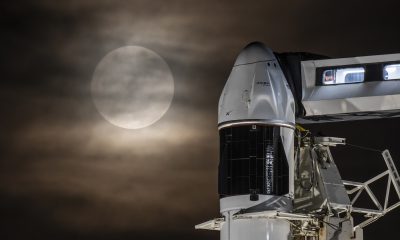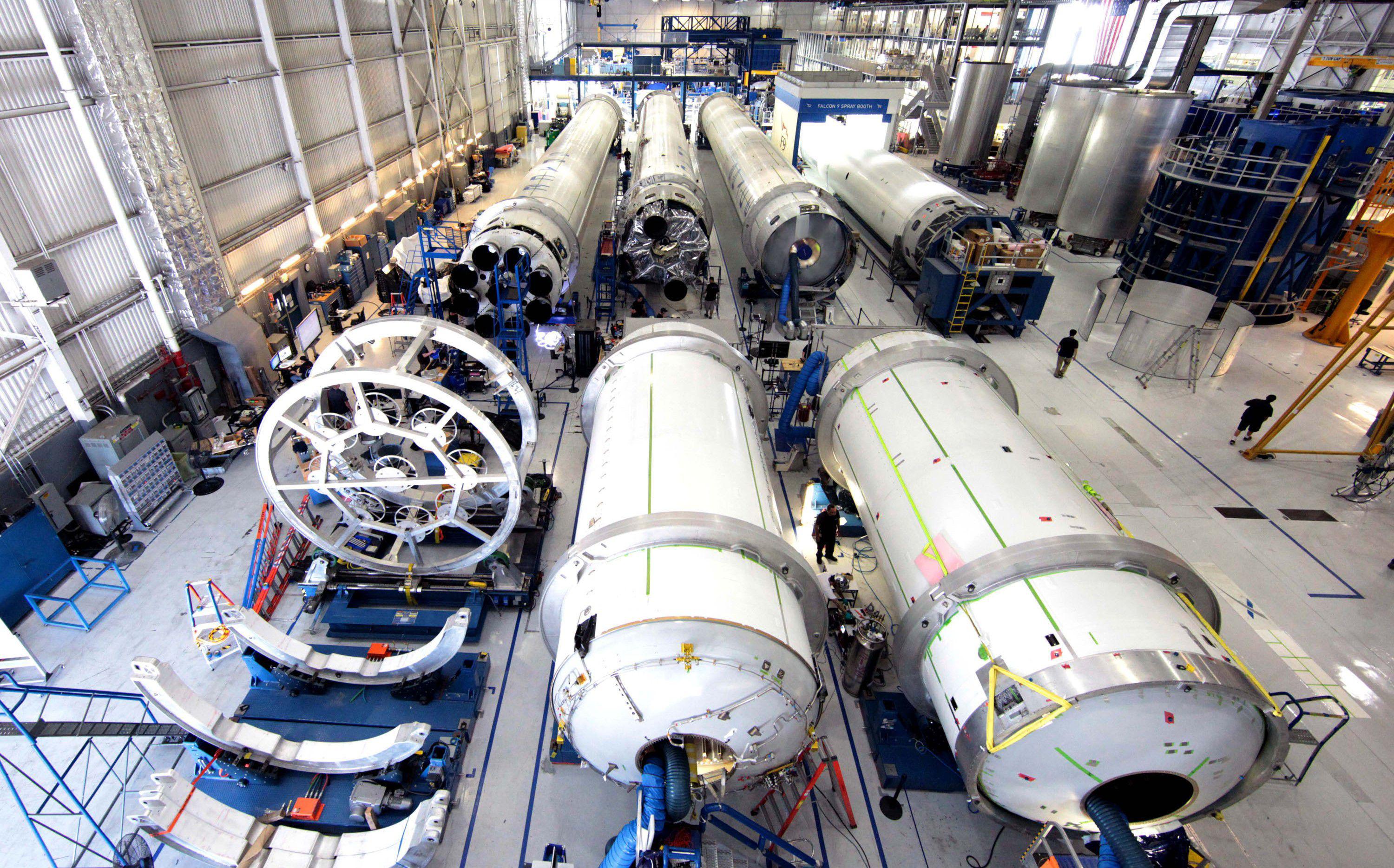

News
SpaceX to in-house mass production of Starlink internet satellite hardware
SpaceX is rapidly expanding it’s Starlink internet constellation development to prepare for full-scale production and aims to bring nearly every major piece of satellite and network hardware and software in-house, according to details revealed in dozens of job postings.
While not explicit, this appears to indicate a significant convergence of multiple possible paths to an operational constellation. Put simply, SpaceX now intends to build every single major component of its 4400+ satellite network in-house. It’s almost easier to list the things SpaceX does not mean to build themselves, but here’s a stab at the components to be built in-house: satellite structures, laser (optical) data interlinks, on-orbit phased array antennae, digital signal processor (DSPs) software and hardware to aim those antennae, solar arrays, battery systems, power electronics, custom integrated circuitry and systems on a chip (SoCs), user terminals and larger gateways, network operations, production automation, autonomous satellite constellation management, and much, much more.
Remote camera has been retrieved, wet with morning dew…and WITH images! Awesome launch by SpaceX. @teslarati #SpaceX #Paz #Starlink pic.twitter.com/tDTXxZErN4
— Pauline Acalin (@w00ki33) February 22, 2018
While entire articles could be spent describing the complexities of every single one of the above subsystems, the point is that SpaceX appears to have gone all-in on building its own satellite constellation, departing from stances in the past that appeared to leave room for subcontracting and outsourcing the production of major parts of the network, particularly with respect to ground terminals and gateways. Postings for ground station and user terminal engineers describe a goal of medium to high volume in-house production of the critical network and customer-facing hardware, and an entry into the production of high volume consumer technology would be a truly eclectic and unprecedented step for a company theoretically focused on launch vehicle development and production and sustainable Mars colonization.
If anything, they speak to the truly vertical nature of SpaceX. Many technology development production companies would simply accede and accept the best subcontractor/outsourcing bid when entering into new territory truly outside of their internal expertise. SpaceX engineers and managers, however, seem to have concluded that the vast majority of hardware and corporate expertise they could co-opt is just not satisfactory for the purpose of building a paradigm-shifting satellite constellation; or as CEO Elon Musk noted in 2015, to “revolutionize the satellite side of things, just as we’ve done with the rocket side of things.”
- SpaceX’s first Starlink prototypes launched in late February aboard a flight-proven Falcon 9 booster. (Pauline Acalin)
- SpaceX’s first two Starlink prototype satellites are pictured here before their inaugural Feb. 2018 launch, showing off a utilitarian design. (SpaceX)
- Falcon 9 roars into the dark California sky with PAZ and Starlink. (Pauline Acalin)
This new (and, in retrospect, unsurprising) trailblazing attitude also helps to explain the marginal delay to Musk’s original 2015 schedule, which estimated initial constellation operations (i.e. a few hundred satellites launched) would begin around 2020. Approximately a year later, SpaceX had built rough prototypes in the form of the original Microsat 1A and 1B twins. This initial foray into independent, long-term communications smallsats was shuttered fairly quickly, and neither of the demo satellites were launched. Instead, SpaceX dove back into prototype design and development, culminating roughly two years later with the March 2018 launch of two dramatically improved prototypes, known as Tintin A and B (or Microsats 2A and 2B in FCC licenses).
It seems probable that the source of this delay lay in an internal decision to dramatically reconfigure the internet constellation for far more in-house development, whereas the original Microsats were likely pieced together from a range of components derived from SpaceX’s Cargo Dragon program or more simply from commercial off-the-shelf (COTS) offerings. Instead, SpaceX’s Starlink development offices in Redmond, Washington and throughout California are staffed with as many as 400 to 500 employees dedicated in large part to the nascent program, similar (if not larger) in scale to OneWeb, the only noteworthy satellite internet competitor at present.
If SpaceX’s decision to push back Starlink’s operational debut by a few years in order to bring in-house almost every single critical subcomponent of Starlink pays off, the company could begin launching finalized satellites en masse as early as late 2019/early 2020, with a goal of offering limited service by 2021 per comments made by CEO Elon Musk. Starlink is likely being brought almost entirely in-house because Musk or other high-level executives and engineers see major room for improvement, improvements that could lower the cost of and improve the performance of lightweight communications satellites by an order of magnitude.

A flight-proven Falcon 9 prepares for launch in May 2018. SpaceX will likely launch at least one more pair of Starlink demo satellites from the West coast later this year (Pauline Acalin)
It will likely take a bit longer than initially expected, but SpaceX may yet still pave their path to Mars colonization with profits derived from a wildly successful and disruptive entrance into the broadband market.
News
Tesla UK sales see 14% year-over-year rebound in June: SMMT data
The SMMT stated that Tesla sales grew 14% year-over-year to 7,719 units in June 2025.

Tesla’s sales in the United Kingdom rose in June, climbing 14% year-over-year to 7,719 units, as per data from the Society of Motor Manufacturers and Traders (SMMT). The spike in the company’s sales coincided with the first deliveries of the updated Model Y last month.
Model Y deliveries support Tesla’s UK recovery
Tesla’s June performance marked one of its strongest months in the UK so far this year, with new Model Y deliveries contributing significantly to the company’s momentum.
While the SMMT listed Tesla with 7,719 deliveries in June, independent data from New AutoMotive suggested that the electric vehicle maker registered 7,891 units during the month instead. However, year-to-date figures for Tesla remain 2% down compared to 2024, as per a report from Reuters.
While Tesla made a strong showing in June, rivals are also growing. Chinese automaker BYD saw UK sales rise nearly fourfold to 2,498 units, while Ford posted the highest EV growth among major automakers, with a more than fourfold increase in the first half of 2025.
Overall, the UK’s battery electric vehicle (BEV) demand surged 39% to to 47,354 units last month, helping push total new car sales in the UK to 191,316 units, up 6.7% from the same period in 2024.
EV adoption accelerates, but concerns linger
June marked the best month for UK car sales since 2019, though the SMMT cautioned that growth in the electric vehicle sector remains heavily dependent on discounting and support programs. Still, one in four new vehicle buyers in June chose a battery electric vehicle.
SMMT Chief Executive Mike Hawes noted that despite strong BEV demand, sales levels are still below regulatory targets. “Further growth in sales, and the sector will rely on increased and improved charging facilities to boost mainstream electric vehicle adoption,” Hawes stated.
Also taking effect this week was a new US-UK trade deal, which lowers tariffs on UK car exports to the United States from 27.5% to 10%. The agreement could benefit UK-based EV producers aiming to expand across the country.
News
Tesla Model 3 ranks as the safest new car in Europe for 2025, per Euro NCAP tests
Despite being on the market longer than many of its rivals, the Tesla Model 3 continues to set the bar for vehicle safety.

The Tesla Model 3 has been named the safest new car on sale in 2025, according to the latest results from the Euro NCAP. Among 20 newly tested vehicles, the Model 3 emerged at the top of the list, scoring an impressive 359 out of 400 possible points across all major safety categories.
Tesla Model 3’s safety systems
Despite being on the market longer than many of its rivals, the Tesla Model 3 continues to set the bar for vehicle safety. Under Euro NCAP’s stricter 2025 testing protocols, the electric sedan earned 90% for adult occupant protection, 93% for child occupant protection, 89% for pedestrian protection, and 87% for its Safety Assist systems.
The updated Model 3 received particular praise for its advanced driver assistance features, including Tesla’s autonomous emergency braking (AEB) system, which performed well across various test scenarios. Its Intelligent Speed Assistance and child presence detection system were cited as noteworthy features as well, as per a WhatCar report.
Other notable safety features include the Model 3’s pedestrian-friendly pop-up hood and robust crash protection for both front and side collisions. Euro NCAP also highlighted the Model 3’s ability to detect vulnerable road users during complex maneuvers, such as turning across oncoming traffic.
Euro NCAP’s Autopilot caution
While the Model 3’s safety scores were impressive across the board, Euro NCAP did raise concerns about driver expectations of Tesla’s Autopilot system. The organization warned that some owners may overestimate the system’s capabilities, potentially leading to misuse or inattention behind the wheel. Even so, the Model 3 remained the highest-scoring vehicle tested under Euro NCAP’s updated criteria this year.
The Euro NCAP’s concerns are also quite interesting because Tesla’s Full Self-Driving (FSD) Supervised, which is arguably the company’s most robust safety suite, is not allowed for public rollout in Europe yet. FSD Supervised would allow the Model 3 to navigate inner city streets with only minimal human supervision.
Other top scorers included the Volkswagen ID.7, Polestar 3, and Geely EX5, but none matched the Model 3’s total score or consistency across categories. A total of 14 out of 20 newly tested cars earned five stars, while several models, including the Kia EV3, MG ZS, and Renault 5, fell short of the top rating.
Elon Musk
Why Tesla’s Q3 could be one of its biggest quarters in history
Tesla could stand to benefit from the removal of the $7,500 EV tax credit at the end of Q3.

Tesla has gotten off to a slow start in 2025, as the first half of the year has not been one to remember from a delivery perspective.
However, Q3 could end up being one of the best the company has had in history, with the United States potentially being a major contributor to what might reverse a slow start to the year.
Earlier today, the United States’ House of Representatives officially passed President Trump’s “Big Beautiful Bill,” after it made its way through the Senate earlier this week. The bill will head to President Trump, as he looks to sign it before his July 4 deadline.
The Bill will effectively bring closure to the $7,500 EV tax credit, which will end on September 30, 2025. This means, over the next three months in the United States, those who are looking to buy an EV will have their last chance to take advantage of the credit. EVs will then be, for most people, $7,500 more expensive, in essence.
The tax credit is available to any single filer who makes under $150,000 per year, $225,000 a year to a head of household, and $300,000 to couples filing jointly.
Ending the tax credit was expected with the Trump administration, as his policies have leaned significantly toward reliance on fossil fuels, ending what he calls an “EV mandate.” He has used this phrase several times in disagreements with Tesla CEO Elon Musk.
Nevertheless, those who have been on the fence about buying a Tesla, or any EV, for that matter, will have some decisions to make in the next three months. While all companies will stand to benefit from this time crunch, Tesla could be the true winner because of its sheer volume.
If things are done correctly, meaning if Tesla can also offer incentives like 0% APR, special pricing on leasing or financing, or other advantages (like free Red, White, and Blue for a short period of time in celebration of Independence Day), it could see some real volume in sales this quarter.
You can now buy a Tesla in Red, White, and Blue for free until July 14 https://t.co/iAwhaRFOH0
— TESLARATI (@Teslarati) July 3, 2025
Tesla is just a shade under 721,000 deliveries for the year, so it’s on pace for roughly 1.4 million for 2025. This would be a decrease from the 1.8 million cars it delivered in each of the last two years. Traditionally, the second half of the year has produced Tesla’s strongest quarters. Its top three quarters in terms of deliveries are Q4 2024 with 495,570 vehicles, Q4 2023 with 484,507 vehicles, and Q3 2024 with 462,890 vehicles.
-

 Elon Musk4 days ago
Elon Musk4 days agoTesla investors will be shocked by Jim Cramer’s latest assessment
-

 News1 week ago
News1 week agoTesla Robotaxi’s biggest challenge seems to be this one thing
-

 Elon Musk2 weeks ago
Elon Musk2 weeks agoFirst Look at Tesla’s Robotaxi App: features, design, and more
-

 News2 weeks ago
News2 weeks agoSpaceX and Elon Musk share insights on Starship Ship 36’s RUD
-

 News2 weeks ago
News2 weeks agoWatch Tesla’s first driverless public Robotaxi rides in Texas
-

 News1 week ago
News1 week agoWatch the first true Tesla Robotaxi intervention by safety monitor
-

 News2 weeks ago
News2 weeks agoTesla has started rolling out initial round of Robotaxi invites
-

 Elon Musk2 weeks ago
Elon Musk2 weeks agoTesla to launch in India in July with vehicles already arriving: report

